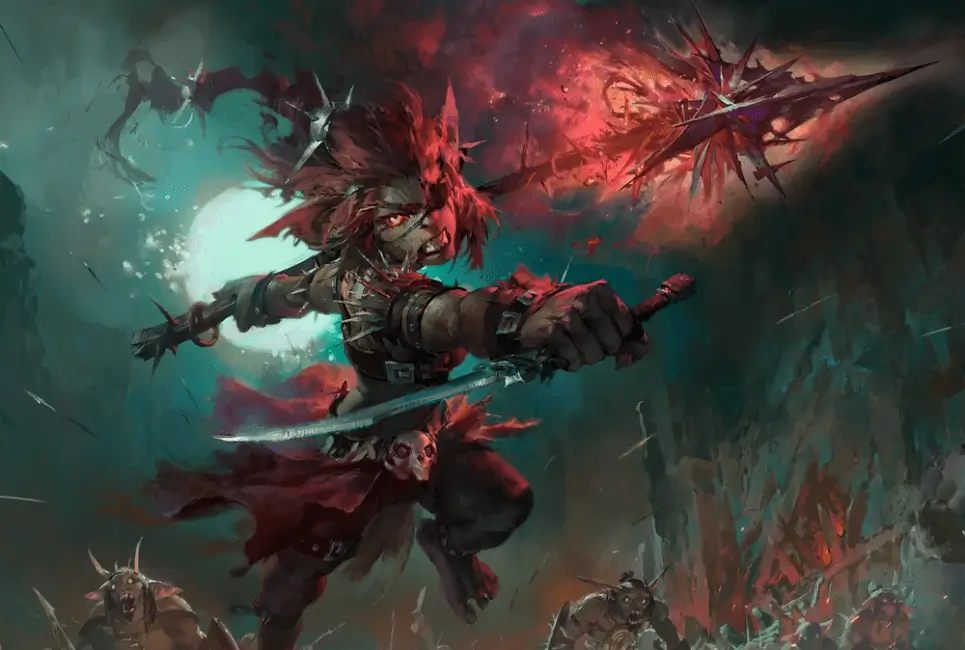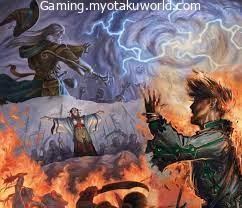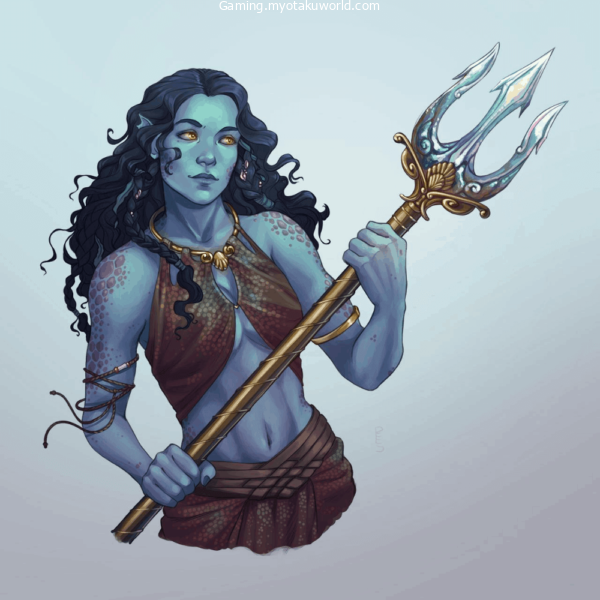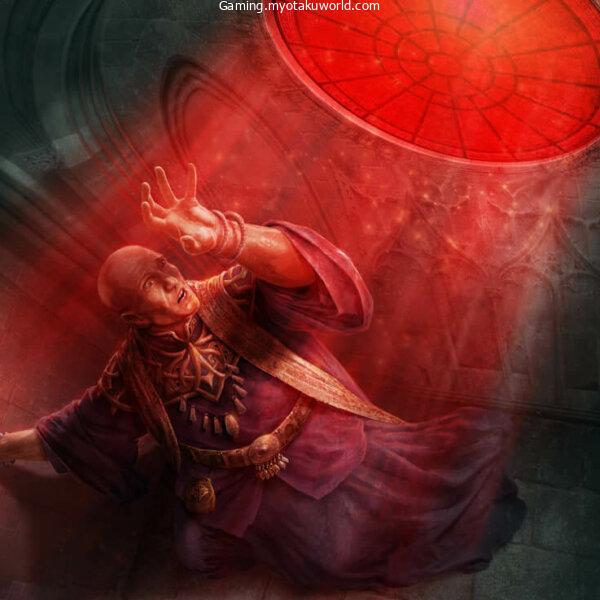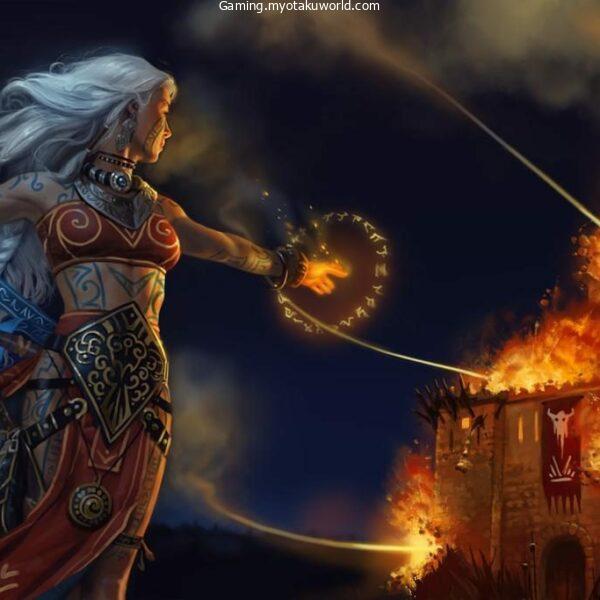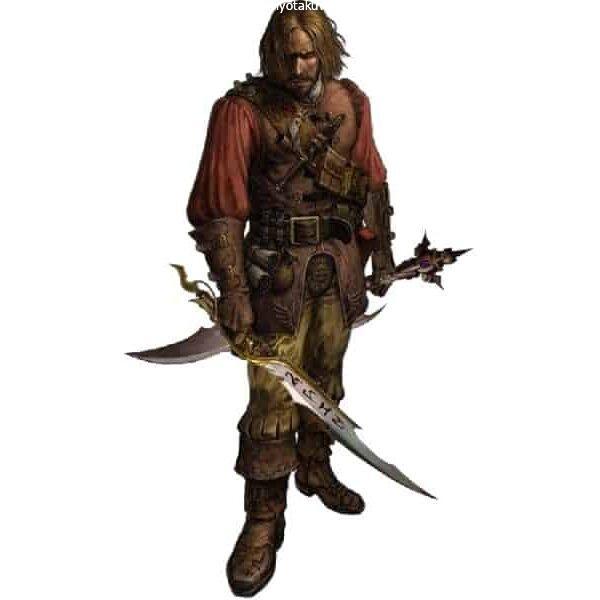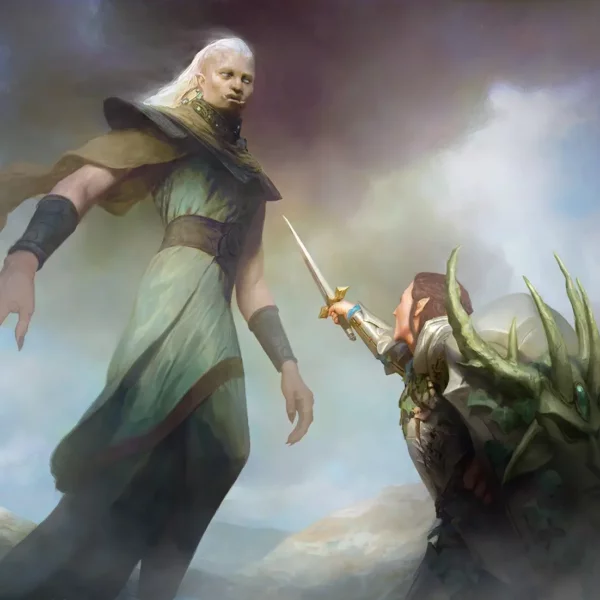You watch as your javelin soars through the air and pierces the dragon’s thick skin. As your d6 damage die sends it crashing to the ground, you realise, if we’re being honest, that you probably won’t be able to throw a spear in real life.
Since 1974, the most popular tabletop roleplaying game in the world has given everyone the chance to do the daring and impossible.
Dungeons and Dragons is the only game that gives everyone the chance to be an adventurer and use their imagination in the tabletop world.
The items you can find in the game are one of its most important and interesting parts. Even though many of the things in Dungeons and Dragons are real, they often have a unique twist that takes a moment to figure out.
Every player is interested in finding and playing with their toys in the game, no matter how they are brought into the game world or turned into magic items.
But not everyone knows what each part of something means. Many new players quit the game because there is too much to learn. There should be a guide to how to do certain things in Dungeons and Dragons.
Now, let’s start with one of the first weapons that people ever learned how to use: a sharp, pointy stick that they could throw at their enemies.
This Javelin 5e guide will tell you everything you need to know about this D&D weapon. You can expect to learn how this relates to real life in the game, where you can find it and how to use it, and most importantly, how to stick ’em with the pointy end.
The Javelin: Pointy from a Distance
In Dungeons and Dragons, the javelin is a type of weapon. As it stands, there are many weapons in the game, but the spear has a special place among them. Before we get into those details, you need to know how the game’s weapons work.
Weapons are things in the game that can be used to hurt other players. Most of the time, they have real-world counterparts. But sometimes, the weapons are just random things that you want to use to knock a goblin’s head off. The javelin is based on real weapons or spears used for throwing.
They are called simple melee weapons in the game. This is because weapons are put into different categories based on how good they are expected to be.
People use anything they can find to hit things. Martial weapons, on the other hand, are things that only a trained fighter should be able to use well.
A simple weapon is made to be used as a weapon, but it doesn’t take much training to learn how to use it. This is where the spear is, and it’s easy to understand what a spear is.
To compare more, it takes less practise to hit a target with a javelin than with a bow. A weapon is a stick with a sharp end that can hurt someone. It doesn’t take long for someone to figure out that if they keep swinging, they will eventually do some damage.
Second, weapons in the game do damage by rolling damage dice. The amount of damage a person takes is also random, within certain limits, in the same way that their health is. Different weapons do different amounts of damage, but a simple weapon will usually do d6 damage.
In the D&D world, this makes the weapon very dangerous for most people. In general, most people should have between four and five hitpoints. Even the least damaging spear will hurt if it hits you in the face. When the strength modifier of the person who throws it is added to the damage, the javelin becomes a deadly weapon.
Sure, the javelin isn’t as popular or chosen as bows, crossbows, or guns, which are also ranged weapons in the game. But they still taste good and can be used in a lot of different ways. Some of the most dangerous warriors the world has ever seen used javelins as their main weapon.
If you want your character to be like an old warrior, the javelin is one of the best weapons to use. So keep reading to learn about the item’s basic game stats and how you can use it to kill people.
Javelin Item Guide
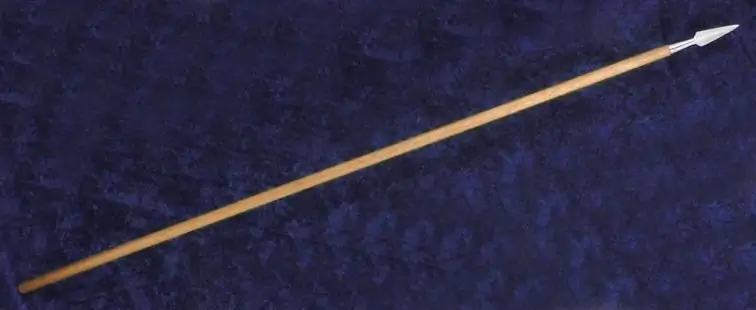
Now that you know how weapons work and how the javelin compares to other weapons, let’s talk about what makes the javelin special. Find out where to get the weapon, how much it usually costs, and what it can do by reading on.
Starter Weapons
In the game’s early builds, many weapon-based classes start with the javelin. Note that you can only get a javelin as one of your character’s starting items. To do this, choose it whenever the equipment asks you to choose a simple melee weapon or gives you a set of javelins as options.
Most starting classes are good with simple melee weapons, so they are also good with javelins. The only people who stand out as not having proficiency are sorcerers and wizards. No matter what, not all classes can choose a javelin as their first weapon.
The barbarian will always get four javelins, while the paladin will always get five. Sorcerers, on the other hand, can choose a javelin, but they don’t know how to use them well, so their starting point is weaker.
Fighters, rogues, and wizards can’t start with a javelin, even though fighters and rogues are good at using them. The other classes can also choose a javelin, but they usually have to give up another weapon that is better for their class.
Straight from the Shop and Elsewhere
Don’t worry if you can’t find a javelin in your starting gear. Most weapons can be bought at shops that sell them. So, unless your DM hates the weapon and never has any on hand, you can buy one instead.
You can also choose to make your own javelin if you have enough time and the right tools. Check with your DM to see what skill checks you might need to take and what tools you need to know how to use. In-game, druids usually make javelins out of alder wood, but you can add your own style when making weapons.
If nothing else works, take a javelin from a dead enemy or steal one from right in front of them. Definitely, you should use it instead of them.
Item Properties
Once you have your javelin, let’s go over its unique properties. These parts of the game make sure that your play is as real as it can be. Plus, remembering these properties will help you when things get tough.
Range
In the game, a javelin can go 30/120 feet. These two numbers are on all ranged weapons and show how far the weapon can reach and how far it can go.
A javelin’s effective range is the distance it can be thrown with a certain amount of accuracy. Within this range, only the d20, your proficiency, and your strength modifier affect the attack roll. You can also choose to stab your enemy when they get within five feet of you.
On the other hand, a weapon’s maximum range tells you how far it can be thrown. It doesn’t matter how far you can throw it to know if you hit something.
When you throw it so far away, you lose some of your weapon’s accuracy. Because of this, your attack roll will suffer when you try to attack. You must roll the d20 twice, take the lower of the two rolls as your attack roll, and then add your modifiers.
Damage
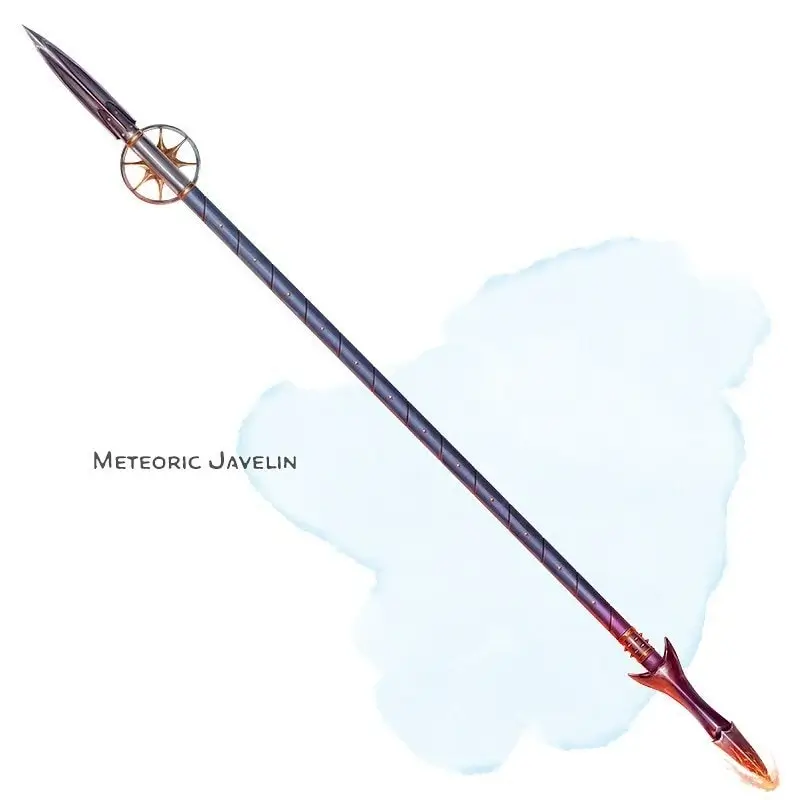
As we’ve already talked about, a d6 damage dies is pretty bad for most people. But many monsters have a lot of life, so you may need to throw more than one of these at them to kill them.
Since javelins are simple weapons, they don’t do as much damage. The greatsword is the most dangerous weapon, doing 2d6 damage, while martial weapons do between d8 and d12 damage. Most simple weapons do d6 damage, but they are less expensive and easier for players to get.
Throwing property
The javelin is different because it can be thrown. The javelin is made to be thrown, and it can go farther than a spear. This helps you deal with dangers from afar and gives you a back-up when things get close.
To use the javelin’s ability to be thrown, you just need to say that you are throwing it, take note of your target’s rage, and attack as usual. Even if you missed, you can still pick up the javelin and throw it again. This means you have almost unlimited chances.
Cost
All javelins in the game are cheap, except for magic javelins. The javelin cost about five pieces of silver, which is about the same price as a blanket. This makes it a great way to buy a lot of javelins at once.
Javelins are very cheap compared to other weapons and can be used over and over again. A spear costs ten silver pieces or one gold piece, which is almost twice as much as a sword, but it does the same damage if you only use it with one hand. This means that the javelin is a cheap but effective alternative to a bow if you don’t have the money or skill to buy one.
Weight
In the game, a javelin weighs about 2 pounds. In Dungeons and Dragons, item weight is always a touchy subject because it adds a realistic touch that not everyone likes. So, this shouldn’t matter that much unless you have a strict DM who won’t let you have a bag of holding or carry every item you’ve ever seen in the game.
Fighting Underwater
Last but not least, you should know that the javelin is great for fighting underwater. Most melee attacks are harder for creatures that can’t swim fast on their own when they’re underwater. This change doesn’t affect a melee attack with a javelin.
Also, when you’re underwater, most ranged weapons automatically miss when you try to use them past their normal range, and they’re weaker at their normal range. Again, the javelin doesn’t care about these things and lets you attack normally. Perfect for when you have to go deep into the ocean and fight monsters that live there.
Magic Javelins: The Javelin of Lightning
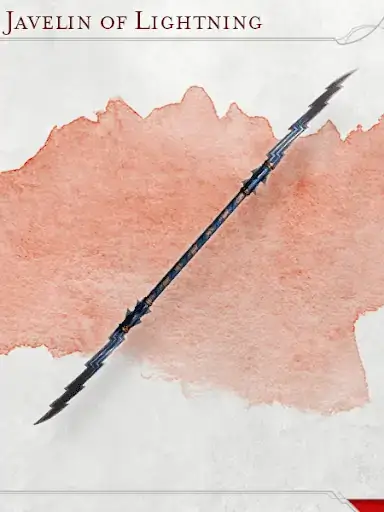
So far, the Dungeon Masters Guide only has one magic javelin with a unique property. There may be +1, +2, and +3 javelins, but the Javelin of Lightning may be the most unique of them all.
The javelin of lightning is a one-of-a-kind magical item that can change into a bolt of lightning. When you throw it and say its command word, it turns into a five-foot wide bolt of lightning that goes from you to a target within 120 feet.
Each creature in the line, besides you and the target, must make a DC 13 Dexterity saving throw and take 4d6 lightning damage if they fail. When your attack roll hits your target, the javelin goes back to normal and deals 4d6 lightning damage on top of the javelin’s normal damage. You can’t use this property until tomorrow.
First, this javelin is a masterpiece just because of how good it tastes. You are throwing a lightning bolt that will destroy anything in its way. Even though it only happens once a day, it’s always cool.
Javelin Character Builds: Striking True
Let’s look at how to use this deadly tool in the best way. To get the most out of the javelin and all of its properties, you’ll probably need a build that’s tailored to it.
Classes
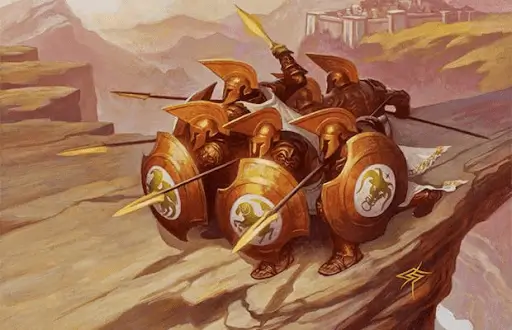
Start with your class for the best builds. Some body types are better at throwing javelins than others. Don’t think that a caster will throw javelins unless they have to. On the other hand, javelins will be given out like candy in martial arts classes.
Here are some of the best classes that can use javelins in the game. As we talk about each one, you’ll figure out which one works best for you.
- Martial Classes
- Blade Pact Warlocks
- Bladesinger Wizards
- Kensei Monks
- Multiclassing
All of these classes know how to use the javelin well, but there are important ways to boost their damage. Also, some types have extra features that help them keep throwing their weapons. Let’s look at them in more depth down below.
Martial Classes
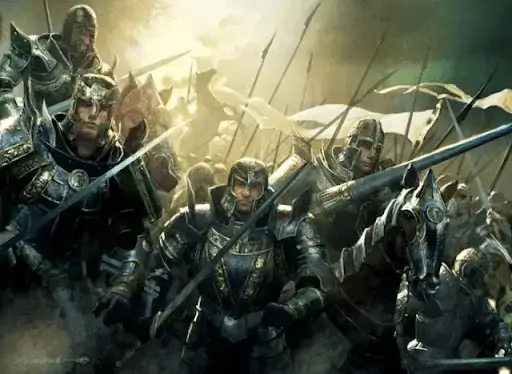
In D&D, the barbarian, fighter, monk, paladin, ranger, and rogue are all types of fighters. They are determined to use their skill with weapons to do a lot of damage to the enemy. Let’s focus on the Barbarian, Fighter, Paladin, and Ranger for this part. What makes them so good is that they all have a natural way of fighting that goes along with how they use javelins.
When using only one melee weapon, these classes can choose the duelling fighting style to get a +2 damage bonus. This is true for the javelin, which is a melee weapon that only needs one hand. The good thing is that it is a melee weapon that can also be thrown, so the +2 damage bonus still works when it is used at a distance. If their DM doesn’t like such tricks, they can also choose the thrown weapon fighting style for the same damage bonus.
Some of the best ones here are Eldritch knights who, if they have a weapon bond with a javelin, can use a bonus action to bring it back to their hands right away. Battle Master Fighters can use their bonus action to attack again by using the Quick Toss move.
As a bonus action, the eagle totem Barbarian can also dash to get its javelins. The Vengeance Paladin can use opportunity attacks to move closer to where their javelins land, and Hunter Rangers can use volley to attack all creatures within 10 feet of an area with javelins.
If you want to be like some famous spear throwers from the past, you could use a battle master fighter to build a hoplite or a skirmisher. Get the defence and thrown weapon fighting styles for the hoplite. For your moves, you can choose between brace, parry, lunging attack, and quick attack.
Choose archery and throwing weapons as your fighting styles as a skirmisher. You want to be quick and mobile, so learn the ambush, bait, switch, distracting strike, and quickly toss moves.
Blade Pact Warlocks
Blade Pact warlocks have broken spellswords, and if you choose the Hexblade as your patron, that makes them even worse. Warlocks in a Blade Pact can use the action on their turn to make a javelin as their pact weapon over and over again. If your javelin is too hard to reach, this is perfect.
Invocations like “Lifedrinker,” which gives your pact weapon javelins a damage boost equal to your charisma, are where the fun comes in. The improved pact weapon is even better, because it makes your regular pact weapon javelins into +1 javelins.
When you reach level 7, you get relentless hex, which lets you use a bonus action to teleport to a target within 30 feet of someone cursed with hex, Hexblade’s curse, or the curse spell. You can now throw your javelin and teleport to where it is all in the same turn.
Bladesinger Wizards

Blade singer wizards work well with the javelin because they can use it while using their blade song. As long as they don’t use a two-handed attack, which is unlikely, they become an unstoppable magical duelist.
When they use Bladesong, Bladesingers can move 10 feet faster, get a bonus to their intelligence, armour class, and concentration saves, and do better on their dexterity checks. This means you can use Bladesong and still be fast enough to get it back without taking damage.
At higher levels, the songs of defence and victory let you add your Intelligence modifier to the damage your javelin does and almost completely reduce damage.
Kensei Monks

Kensei monks are weapon-based, so their class abilities can deal a lot of damage with weapons. With an unarmed strike, they can use a javelin to get a +2 ac bonus. In addition to being able to defend themselves without weapons, they can become almost impossible to hit.
Kensei monks can get past resistance by making normal javelins magical with their One With the Blade ability. Also, if they spend a ki point, they can make their javelins do as much damage as their martial arts. When all else fails, they can reroll a missed attack with their javelins once per turn.
Multiclassing

You can always choose to be more than one class to get the javelin-throwing benefits of another class. Here are some of the best ones to switch between:
- Three levels of fighter for Eldritch Knight
- Three levels of Hexblade warlock for Pact of the Blade
- Any amount of levels in Battle Master Fighter
- Two levels in Bladesinger Wizard
If you use these options for multiclassing, you should be able to use the benefits of the classes above with your current class. This is great if you want to use weapons as a spellcaster or a character who doesn’t fight.
Feats
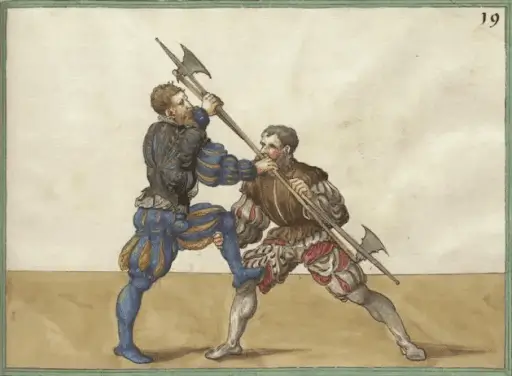
Feats are extra things that a character can have instead of getting better at something. Also, as you get better at a class, you may be able to take on more feats, like when you become a fighter.
Feats are powerful abilities, but not all of them work well with the javelin. Here are some of the best feats you can pick to make your build the best it can be. Keep in mind that you can find this information in different official sourcebooks.
- Fighting Initiate
- Martial Adept
- Piercer
- Shield Master
- Weapon Master
You can use these feats to get the benefits of the builds above without giving up levels in a certain class. These work well with a javelin style of play and let you do the most damage possible.
If your class doesn’t have a fighting style, you can get one with the fighting initiate feat. This is perfect if you only need the extra +2 damage from duelling or thrown weapon fighting. That +2 damage adds up and with multiple javelins, expect to deal tremendous damage.
On the other hand, the martial-adept feat lets you get two manoeuvres and one superiority die without taking 3 levels to change your class to Battlemaster. This lets you use your manoeuvre to get a saving throw DC of 8 or higher, your proficiency plus your strength, or your dexterity modifier. But for more accurate javelin throws, you might want to get the Quick toss and Precision attack manoeuvres as your two tricks.
The piercer feat from Tasha’s Cauldron of Everything is significant as that is your weapon’s damage type. With this, you can reroll your javelin’s damage die once per turn, deal one more damage die when you hit a target, and get a +1 bonus to your strength or dexterity.
With the shield master and weapon master master feats, you can be like an ancient spear and shield specialist. If you didn’t already have it, Weapon Master would let you use javelins well. Shield master, on the other hand, lets you push as a bonus if you attacked with your action.
If you are the only one being attacked, you can add the +2 bonus from your shield to your Dexterity saving throw. If nothing else works, you can use a reaction to make sure that if you make a dexterity saving throw and succeed, you don’t take any damage even if you would have.
FAQs
Are Javelins Counted as Polearm Weapons?
WEAPON MECHANICS, SUCH AS POLEARM MASTERS, DON’T COUNT JAVELINS AS POLEARM WEAPONS. In D&D, you can only use the glaive, halberd, quarterstaff, or spear as a polearm. The main purpose of these polearms, unlike the Javelin’s, is to be used as melee weapons. Even though the javelin is not a polearm, it is much more versatile in many ways. With a normal range of 30 feet, you can hit most enemies from farther away. This is a great way to hit flying enemies who, on average, can get to you in 30 feet.
WHERE CAN I GET MAGICAL JAVELINS?
You can always ask your DM to make you a new weapon in addition to the magical javelins in the Dungeon Master’s Guide. A CUSTOM-MADE MAGICAL JAVELIN is unique to you and gives your character more depth based on how they got it.
If you’re a DM and you’re thinking about making a magical javelin, you’ll need to do a few things. Find out how many properties your magical javelin has by first figuring out how rare it is. CHOOSE SEVERAL PROPERTIES TO DEFINE YOUR MAGIC ITEM IN THE SECOND STEP.
If you want a good place to start, TASTE OTHER MAGICAL ITEMS INSTEAD. Add a NINE-LIVES-STEALER EFFECT TO A RARE JAVELIN USED BY A DEATH KNIGHT OR AN EXTRA 2D6 FLAME DAMAGE TO A JAVELIN FORGED IN A VOLCANO MADE OF PURE HEAT. OR, MAKE YOUR PROPERTIES AND SEE WHERE THIS TAKES YOU!
WHY SHOULD I CHOOSE A JAVELIN OVER A SPEAR?
You’ll want to choose a Javelina because it has a better range, a low price, is light, and can be used in many different ways. Think of it this way: every spear costs at least twice as much as a javelin. For the same amount of gold, YOU’RE GETTING DOUBLE THE DAMAGE!
